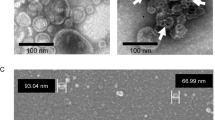Abstract
Bacterial pore-forming toxins (PFTs) are essential virulence factors of many human pathogens. Knowledge of their structure within the membrane is critical for an understanding of their function in pathogenesis and for the development of useful therapy. Atomic force microscopy (AFM) has often been employed to structurally interrogate many membrane proteins, including PFTs, owing to its ability to produce sub-nanometer resolution images of samples under aqueous solution. However, an absolute prerequisite for AFM studies is that the samples are single-layered and closely-packed, which is frequently challenging with PFTs. Here, using the prototypical member of the cholesterol-dependent cytolysin family of PFTs, perfringolysin O (PFO), as a test sample, we have developed a simple, highly robust method that routinely produces clean, closely-packed samples across the entire specimen surface. In this approach, we first use a small Teflon well to prepare the supported lipid bilayer, remove the sample from the well, and then directly apply the proteins to the bilayer. For reasons that are not clear, bilayer preparation in the Teflon well is essential. We anticipate that this simple method will prove widely useful for the preparation of similar samples, and thereby enable AFM imaging of the greatest range of bacterial PFTs to the highest possible resolution.
Similar content being viewed by others
References
Welch R A. Pore-forming cytolysins of gram-negative bacteria [J]. Molecular Microbiology, 1991, 5(3): 521–528.
Mueller M, Ban N. Enhanced snapshot: Poreforming toxins [J]. Cell, 2010, 142(2): 334.
Bischofberger M. Assembly mechanisms and cellular effects of bacterial pore-forming toxins [D]. Lausanne: Swiss Federal Institute of Technology in Lausanne (EPFL), 2011.
Czajkowsky D M, Li L, Sun J, et al. Heteroepitaxial streptavidin nanocrystals reveal critical role of proton “fingers” and subsurface atoms in determining adsorbed protein orientation [J]. American Chemical Society Nano, 2012, 6(1): 190–198.
Bippes C A, Muller D J. High-resolution atomic force microscopy and spectroscopy of native membrane proteins [J]. Reports on Progress in Physics, 2011, 74: 086601.1–43.
Kowal J, Chami M, Baumgartner P, et al. Ligandinduced structural changes in the cyclic nucleotide-modulated potassium channel MloK1 [J]. Nature Communications, 2014, 5: 3106.
Colom A, Casuso I, Boudier T, et al. High-speed atomic force microscopy: Cooperative adhesion and dynamic equilibrium of junctional microdomain membrane proteins [J]. Journal of Molecular Biology, 2012, 423(2): 249–256.
Mou J, Yang J, Shao Z. Atomic force microscopy of cholera toxin B oligomer bound to bilayers of biologically relevant lipids [J]. Journal of Molecular Biology, 1995, 248(3): 507–512.
Czajkowsky D M, Iwamoto H, Cover T L, et al. The vacuolating toxin from Helicobacter pylori forms hexameric pores in lipid bilayers at low pH [J]. Proceedings of the National Academy of Sciences, 1999, 96(5): 2001–2006.
Casuso I, Khao J, Chami M, et al. Characterization of the motion of membrane proteins using high-speed atomic force microscopy [J]. Nature Nanotechnology, 2012, 7: 525–529.
Czajkowsky D M, Sheng S, Shao Z. Staphylococcal α-hemolysin can form hexamers in phospholipid bilayers [J]. Journal of Molecular Biology, 1998, 276(2): 325–330.
Czajkowsky D M, Shao Z. Chapter 11 supported lipid bilayers as effective substrates for atomic force microscopy [J]. Methods in Cell Biology, 2002, 68: 231–241.
Hotze E M, Tweten R K. Membrane assembly of the cholesterol-dependent cytolysin pore complex [J]. Biochimica et Biophysica Acta, 2012, 1818(4): 1028–1038.
Czajkowsky D M, Hotze E M, Shao Z, et al. Vertical collapse of a cytolysin prepore moves its transmembrane β-hairpins to the membrane [J]. Journal of European Molecular Biology Organization, 2004, 23(16): 3206–3215.
Shao Z, Mou J, Czajkowsky D M, et al. Biological atomic force microscopy: What is achieved and what is needed [J]. Advances in Physics, 1996, 45(1): 1–86.
Rossjohn J, Feil S C, Mckinstry W J, et al. Structure of a cholesterol-binding, thiol-activated cytolysin and a model of its membrane form [J]. Cell, 1997, 89(5): 685–692.
Author information
Authors and Affiliations
Corresponding authors
Additional information
Foundation item: the National Natural Science Foundation of China (Nos. 991129000, 11374207, 31370750, 21273148 and 11074168)
Rights and permissions
About this article
Cite this article
Luo, Ml., Shao, Zf., Shen, Y. et al. Novel experimental strategy for high resolution AFM imaging of membrane-associated bacterial toxins. J. Shanghai Jiaotong Univ. (Sci.) 19, 569–573 (2014). https://doi.org/10.1007/s12204-014-1543-1
Received:
Published:
Issue Date:
DOI: https://doi.org/10.1007/s12204-014-1543-1
Key words
- atomic force microscopy (AFM)
- perfringolysin O (PFO)
- bacterial pore forming toxins (PFTs)
- supported lipid bilayers




